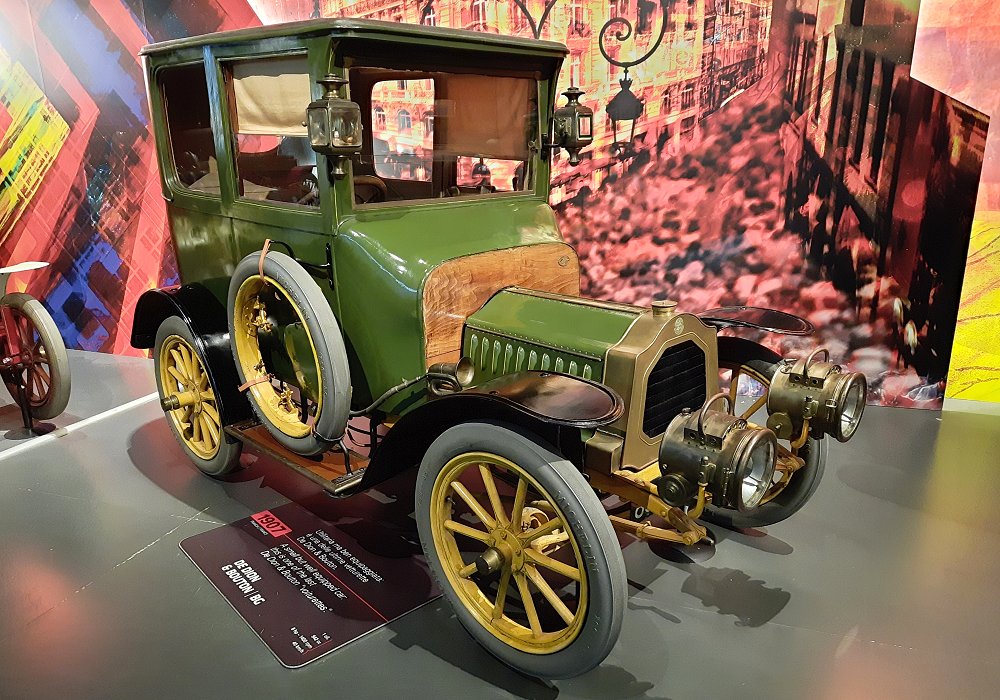Description
The De Dion-Bouton Type BG Limousine was a sophisticated and luxurious motorcar introduced in the early 1910s, during a time when De Dion-Bouton was establishing itself as a premier manufacturer of refined, multi-cylinder automobiles. As motoring matured from a pastime of the wealthy into a mode of respectable and even essential transport for the professional and upper classes, the Type BG reflected the increasing demand for enclosed, chauffeur-driven vehicles that combined comfort, prestige, and technical excellence.
At the core of the Type BG was a front-mounted four-cylinder petrol engine, likely displacing around 2.5 to 3.5 litres and producing approximately 15 to 20 horsepower. This engine was part of De Dion-Bouton’s steadily expanding range of more powerful and sophisticated units, featuring water cooling, side-valve operation, and magneto ignition. The smooth, dependable performance of this engine made it well-suited to carrying the heavier bodywork of a limousine, while still delivering respectable performance for both urban and longer-distance travel.
The engine was mated to a four-speed gearbox, operated via a centrally mounted gear lever, and transmitted power to the rear wheels via a shaft drive. This layout reflected the industry’s move away from chain drives, offering improved reliability and reduced maintenance—an essential consideration for a vehicle intended for professional or high-society clients. The Type BG could comfortably cruise at speeds of 50 to 60 km/h, which was entirely adequate given the condition of most roads at the time.
The defining feature of the Type BG was its limousine body, an enclosed coach built to accommodate passengers in privacy and comfort, with a separate, open or semi-enclosed front compartment for the driver. The rear cabin typically featured upholstered bench seating, finely finished wood trim, and conveniences such as interior lighting, glass division panels, and occasionally speaking tubes or pull cords to communicate with the chauffeur. High-grade materials such as leather, mahogany, and brass were used throughout, contributing to an air of elegance and refinement.
Built on a sturdy pressed-steel ladder frame, the Type BG rode on semi-elliptic leaf springs front and rear, with solid axles and wooden artillery wheels fitted with pneumatic tires. Steering was by worm and sector or rack and pinion, offering accurate and smooth control. Braking was provided by a transmission brake and mechanical drum brakes on the rear wheels, which were standard for this class of vehicle.
The De Dion-Bouton Type BG Limousine was aimed squarely at an affluent clientele—businessmen, professionals, and members of the aristocracy—who sought comfort, status, and reliable transportation. It was often ordered through coachbuilders who custom-fitted the body to the buyer’s specifications, resulting in a wide variety of subtly different designs under the same model name.
Today, the Type BG Limousine is a rare and distinguished survivor of the Edwardian motoring era. It exemplifies the transition from horseless carriages to true motorcars of sophistication and style, capturing a moment when the automobile began to rival the railway and the carriage for prestige and practicality in everyday life. As a collector’s item, it remains highly prized for its craftsmanship, historical significance, and dignified appearance.
